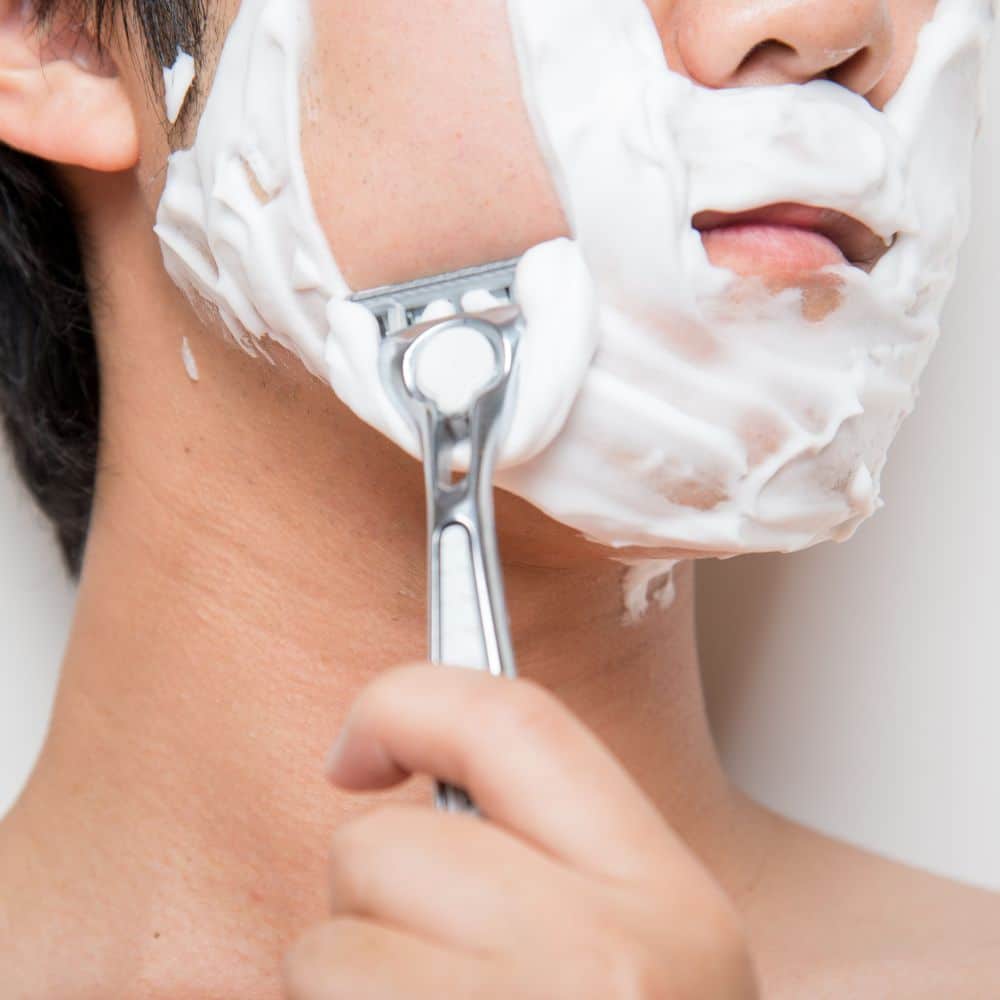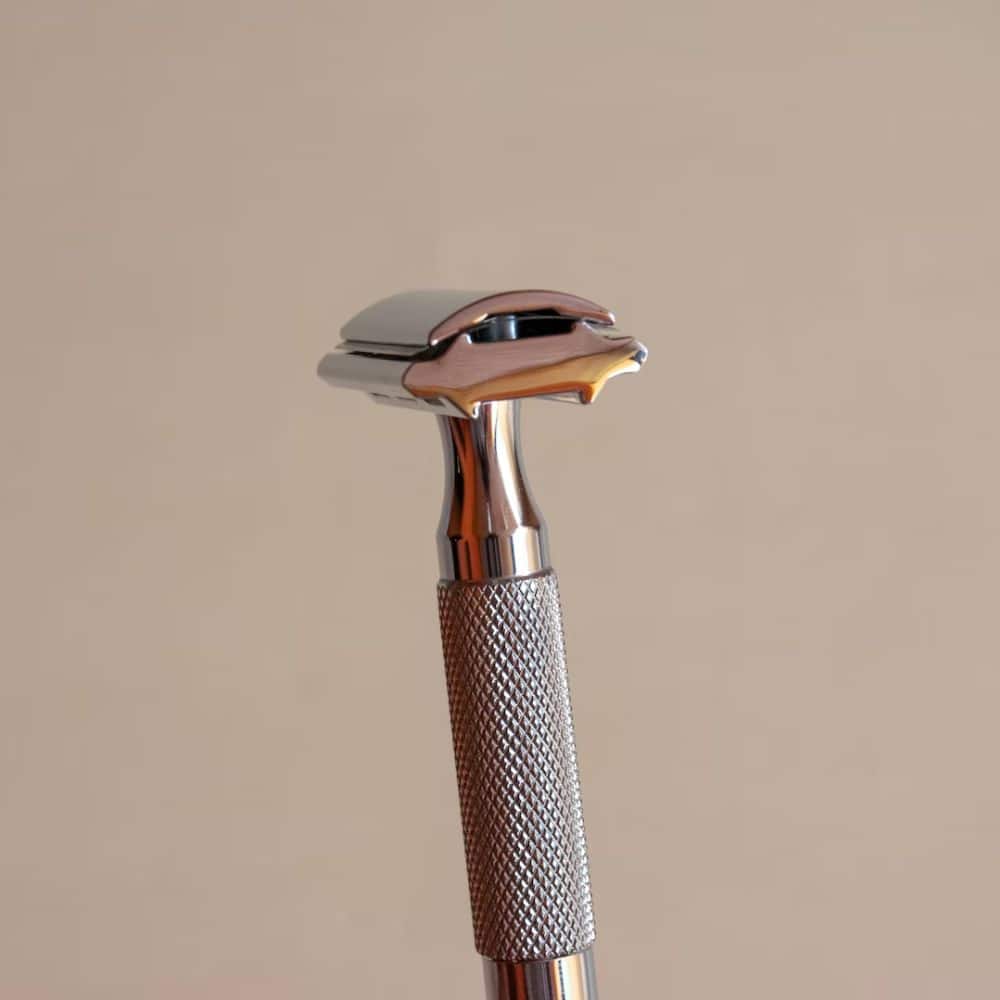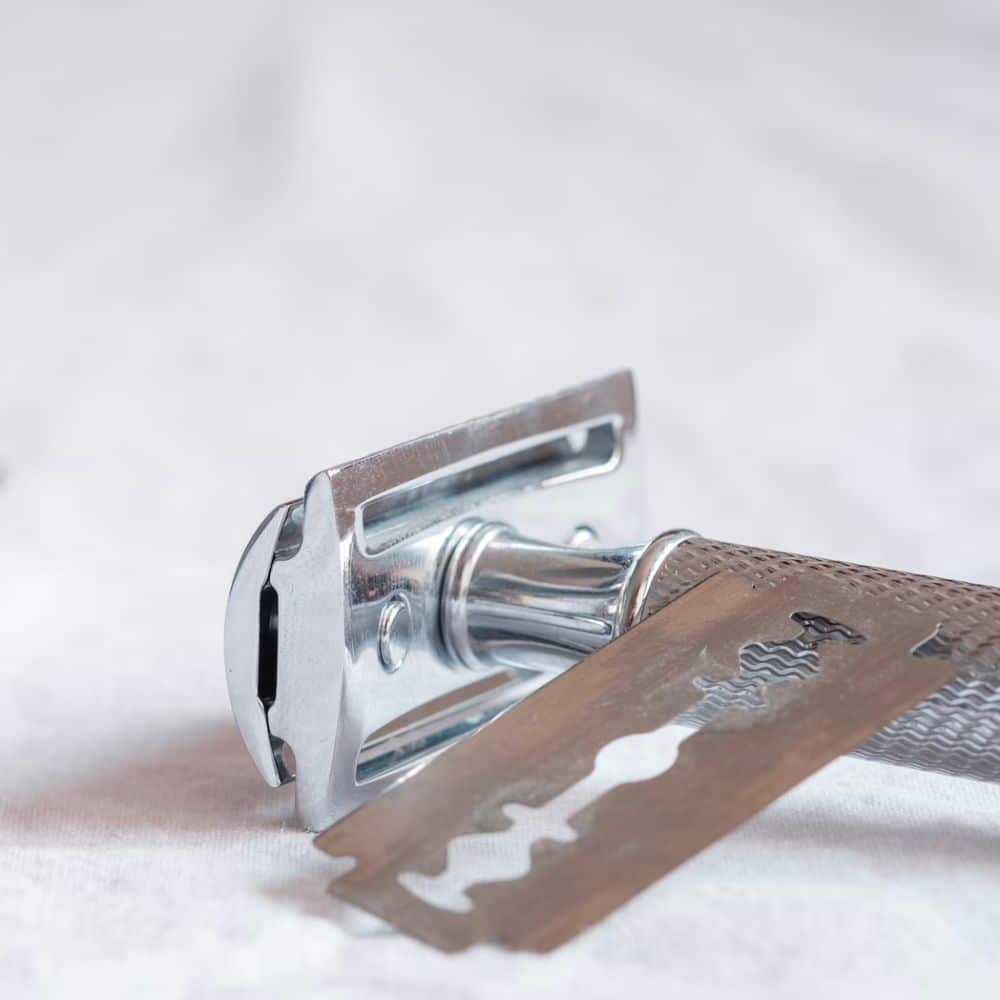Are you thinking about switching to a safety razor? Good choice. Not only will you get an incredibly close shave, but you’ll also save money in the long run.
But if you are wondering if they provide a closer shave than a cartridge razor, you may be disappointed. Safety razors cannot get as close to a shave as a cartridge razors.
However, don’t be too discouraged. Safety razors, when appropriately used, can give you silky smooth skin.
We’ll explain more below:
Why Cartridge Razors Get Smoother Results

When you pass a multi-blade cartridge razor (or even a disposable razor) over your skin, the first blade will lift the hair up while the second blade cuts it at skin level. The third blade then cuts the hair even closer to the skin.
With each subsequent blade, the hair is cut closer and closer to the skin. So by the time the last blade passes, the hair has been cut just a fraction beneath the surface. This lift-and-cut phenomenon is known as hysteresis. The more blades on the razor, the more hysteresis and the closer the shave.
While this is advantageous for getting a closer shave, it comes at a price. If you have exceptionally curly or coarse hair, the risk of ingrown hairs is significantly higher when you cut it that close to the skin. This is why many men with coarse or curly hair prefer to use a safety razor.
Why Safety Razors Don’t Get As Close Shave

Safety razors don’t get as close of a shave as cartridge razors because they have a single blade. So when you pass it over your skin, it will only cut the hair at the skin level. It can’t lift the hair up like a cartridge razor can.
How to Get Closer Results With a Safety Razor

Fortunately, when using a safety razor to its fullest potential, you can achieve smooth results.
To achieve these results, it’s more about technique than anything else. Before shaving, take a moment to map out the grain of your facial hair. Then, notice the direction your whiskers grow in and follow that direction when shaving.
- With The Grain: The first pass should always be with the grain. This is the direction your beard naturally grows in.
- Across The Grain: The second pass can be across the grain. This is perpendicular to the direction your beard grows.
- Against The Grain: The third pass (and final pass) should be against the grain. This is the opposite direction of your beard growth.
With every pass that you make, the hair will get cut closer and closer to the skin. However, should you have sensitive skin, you may want to avoid going against the grain, as this could cause razor burn or irritation.
Additionally, ancillary factors such as using a pre-shave oil, a good shaving cream, and a sharp blade will also contribute to a closer shave.
Note:
Open comb safety razors will provide a closer shave than a closed comb safety razor as they lessen the pressure applied by the safety bar resulting in the skin and hair coming in closer contact with the blade.
Common Mistakes People Make Trying to Get an Unnecessarily Close Shave
When browsing forums or reading folks’ feedback with safety razors, you’ll often see people complaining that they can’t get as close of a shave as they could with their cartridge razor. As a result, they try to go over the same area multiple times or add additional pressure in hopes of getting a closer shave. Unfortunately, this is one of the worst things you can do.
Going over the same area multiple times will only further irritate your skin without giving you significantly closer results. Only pass over an area a few times using short, overlapping strokes.
When you add too much pressure, you will likely cause nicks and cuts to your skin. Requiring you to use a styptic pencil or apply a Band-Aid to stop the bleeding.
In most instances, letting the weight of the razor do the work for you is key. This will help prevent you from putting too much pressure on the razor and ensure you get an even shave.
Frequently Asked Questions
Here are a few other frequently asked questions that we get about safety razors:
Does the cutting angle of the blade matter?
Absolutely. The blade must be at the correct cutting angle to ensure that you get a close shave. A good rule of thumb is to hold the blade at a 30-degree angle.
How often should I replace the blade?
This will depend on how often you shave and the coarseness of your beard. In general, you should be able to get 5-7 shaves out of a blade before needing to replace it. However, if you notice irritation afterward, or the facial hair requires multiple passes to get a clean cut, the blade is too dull.
Should you take different steps when shaving elsewhere on your body?
In short, no. However, we don’t recommend manscaping with a safety razor as you could accidentally nick yourself, especially in a sensitive area. Instead, we recommend using a body hair trimmer.
Final Thoughts
While brands like Gillette and Schick get a lot of grief for their high cost of ownership, there is no denying that they are effective at providing a close shave. In fact, they are so effective that even most safety razor users will concede that cartridge razors provide a closer shave.
However, the tradeoff is that cartridge razors are more likely to cause razor bumps, aren’t eco-friendly, and are way more expensive to operate in the long run.
Safety razors, on the other hand, provide an excellent shave and can get nearly as close results when used correctly. Plus, they’re eco-friendly, easy on the wallet, and can last a lifetime with proper care.